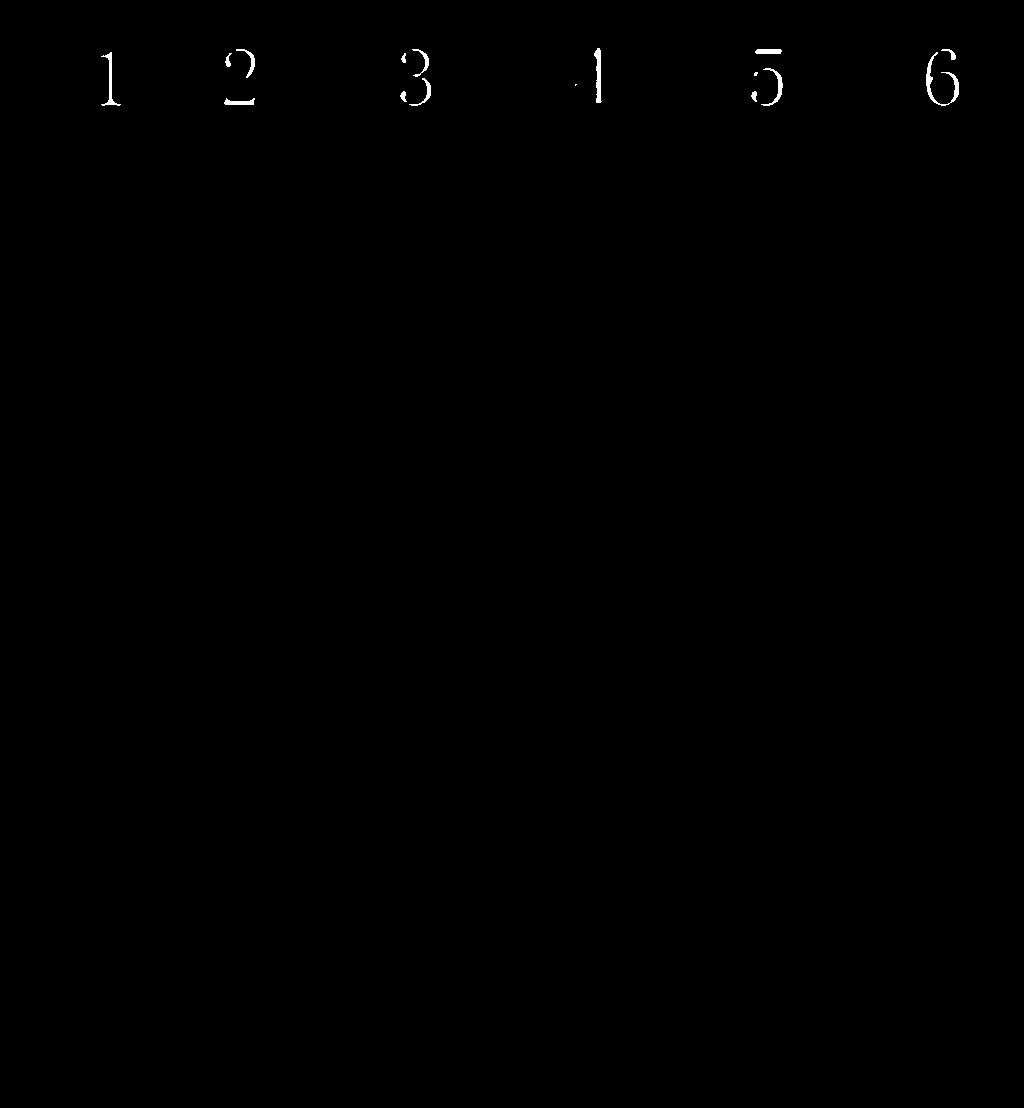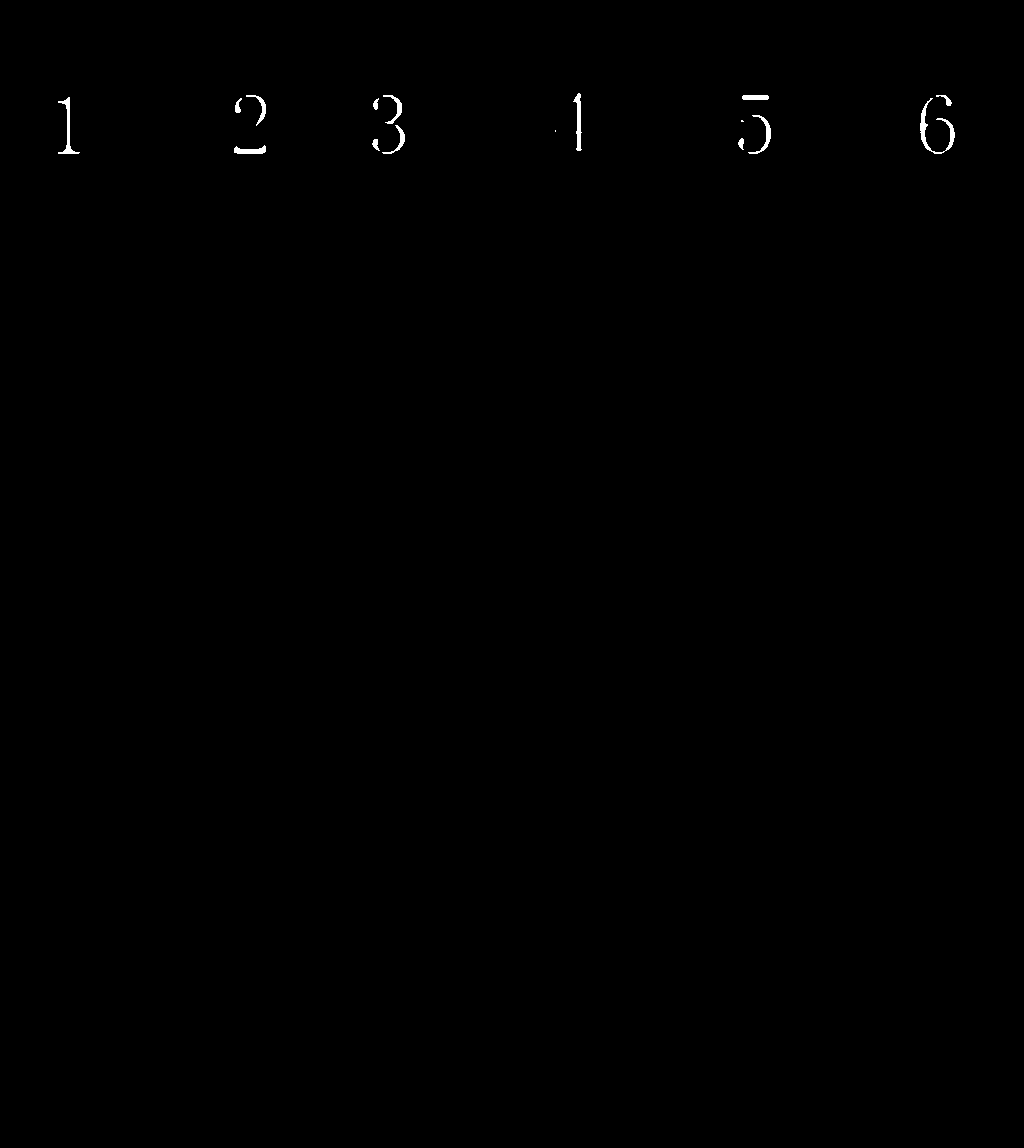Improved CTAB (cetyltrimethylammonium bromide) method for extracting genomic DNA of cotton
A technology of cotton genome and extraction solution, which is applied in the field of DNA extraction, can solve the problems of long time-consuming RNA removal and cumbersome steps, and achieve the effects of reducing DNA extraction cost, high DNA quality, and shortening extraction time
- Summary
- Abstract
- Description
- Claims
- Application Information
AI Technical Summary
Problems solved by technology
Method used
Image
Examples
Embodiment 1
[0040] Example 1 Genomic DNA Extraction of Upland Cotton Leaves
[0041] A kind of improved CTAB method extracts cotton genome DNA, comprises the following steps:
[0042] (1) Take the leaves of upland cotton as the experimental material, take 100~200 mg sample and put it into a 2.0mL centrifuge tube, grind it into powder with liquid nitrogen, then add 1000 μL of CTAB buffer solution, shake well, and place in a 65°C water bath React in medium for 40-60 minutes, and gently shake every 10 minutes to obtain DNA-containing extract I. The powder is mixed with CTAB buffer according to m:v ratio of 1-2:10.
[0043] The CTAB buffer contains: 1.4 M NaCl (sodium chloride), 0.02 M EDTA (pH8.0), 0.1 MTris-HCl (pH7.5), 2% (w / v) cetyltrimethyl Ammonium bromide (CTAB), 2% (w / v) PVP-K30, 0.1% (w / v) DIECA, 0.2% (v / v) β-mercaptoethanol, the solvent is deionized water, where β-mercapto Ethanol is added now.
[0044] (2) Put the extraction solution I centrifuge tube containing the DNA in ice ...
Embodiment 2
[0051] Embodiment 2 Determination of RNase A action temperature
[0052] Several copies of upland cotton leaf materials were prepared, and the genomic DNA of upland cotton leaves was extracted by the method in Example 1. Among them, in step (2), place the centrifuge tube containing the DNA extraction solution I in ice to cool down, and then add 1% (v / v) RNase A (purchased from Treasure Biological Company, the specification is 10mg / ml) , and then digested at 22°C, 27°C, 32°C, 37°C, and 65°C for 2 hours in a water bath, respectively.
[0053] Configure 0.8% agarose gel, and use 1×TAE electrophoresis buffer to perform electrophoresis detection on the extracted genomic total DNA. The composition of the 1×TAE electrophoresis buffer is as follows: 0.04mol / L Tris-acetic acid, 0.001mol / L EDTA. Genomic DNA of upland cotton leaves extracted with the kit (Tiangen DP320) was used as a control, and agarose gel electrophoresis was performed together with the genomic DNA of upland cotton le...
Embodiment 3
[0054] Example 3 Determination of RNase A action time
[0055] Several copies of upland cotton leaf materials were prepared, and the genomic DNA of upland cotton leaves was extracted by the method in Example 1. Among them, in step (2), place the centrifuge tube containing the DNA extraction solution I in ice to cool down, add 1% (v / v) RNase A, and then digest it in a water bath at 37°C for 2 hours, 1h, 0.5h, 15min, 7.5min.
[0056] Genomic DNA of upland cotton leaves extracted with the kit (Tiangen DP320) was used as a control, and agarose gel electrophoresis was performed together with the genomic DNA of upland cotton leaves obtained under the action of the above-mentioned RNase at different digestion times. The results are shown in figure 2 . Such as figure 2 As shown, 1% (v / v) concentration of RNase A reacted in a water bath at 37°C for 7.5 minutes is sufficient to fully digest the RNA in the genome.
PUM
 Login to View More
Login to View More Abstract
Description
Claims
Application Information
 Login to View More
Login to View More - R&D
- Intellectual Property
- Life Sciences
- Materials
- Tech Scout
- Unparalleled Data Quality
- Higher Quality Content
- 60% Fewer Hallucinations
Browse by: Latest US Patents, China's latest patents, Technical Efficacy Thesaurus, Application Domain, Technology Topic, Popular Technical Reports.
© 2025 PatSnap. All rights reserved.Legal|Privacy policy|Modern Slavery Act Transparency Statement|Sitemap|About US| Contact US: help@patsnap.com



